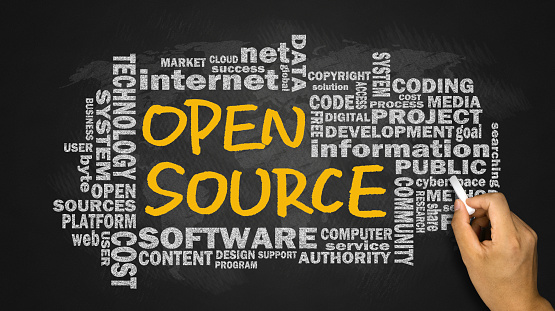If you are just getting started with your open source commercialization strategy or if you are looking for new insights on both evaluating and evolving your current strategy this blog series will both provide you with an overview and lessons learned from the trenches that you can directly apply based on my 20 years of helping organization commercialize their open source offerings.

Quick Background
Open-source software has become a ubiquitous part of modern technology, powering everything from servers to mobile apps. As a result, more and more companies are looking for ways to commercialize their open-source projects and turn them into successful businesses. However, with so many different models to choose from, it can be difficult to know which one is right for you and your project.
Business Model Options
One key aspect of commercializing open-source software is to ensure that your business model is aligned with your current growth stage and adoption goals. There are three main models that companies typically use when commercializing open-source software: fully open-source, open-core, and open SaaS or hosted applications.
Fully Open-Source
- The fully open-source model is just as it sounds: all of the code is open-source, and all features are available for free. The primary way to generate revenue with this model is through services and support, such as consulting, training, and custom development. This model is particularly attractive to organizations that are looking to build a strong community of contributors and users, as it encourages participation and collaboration.
- One of the key attributes of fully open-source software is the license mix, as this can have a significant impact on the accessibility of the codebase. The license chosen should be one that encourages contribution and collaboration, while also providing protection for the intellectual property of the software.
Open-Core
- The open-core model is a hybrid approach that combines open-source with closed-source proprietary components. The core of the project is open-source and freely available, while additional features and functionalities are available only as paid, proprietary add-ons. This model allows companies to generate revenue from their software while still leveraging the benefits of open-source, such as a large community of contributors and a lower barrier to entry.
- The key attribute of open core is accessibility to binaries versus source, as the core functionality is usually only accessible in binary form. This can make it more difficult for users and contributors to get involved, as they may not have access to the full codebase.
Open SaaS or Hosted Applications
- The open SaaS or hosted applications model involves offering a cloud-based version of your open-source software, usually as a service (SaaS) or as a hosted application. The software itself is open-source, but users must pay to access the hosted version. This model is best suited to projects that are more end-user focused and where the primary value proposition is ease of use and accessibility.
- One of the key attributes of open SaaS or hosted applications is contribution and community strategies, as this model can be less appealing to users and contributors, as they do not have direct access to the codebase. The commercials established to derive revenue and value for the company must be carefully considered, as this model requires a different approach to pricing and licensing.
Key Attributes Impacting Commercialization Strategies
Regardless of which model you choose, there are several key attributes to consider when commercializing your open-source software. These include the approach to creating your distribution, the license mix, accessibility to binaries vs source, contribution, and community strategies.
- Distribution: Your distribution strategy will determine how users access and download your software. Will you offer pre-built binaries or only source code? Will you make it available on popular package managers, like npm or pip? Consider what makes the most sense for your users and your project.
- License Mix: The license mix will determine the level of openness of your project and what kind of contributions you are willing to accept. Common open-source licenses include GPL, Apache, and MIT.
- Accessibility to Binaries vs Source: Consider whether you want to make the source code of your project freely available to users or if you prefer to restrict access to only paying customers.
- Contribution: To be successful as an open-source project, it is important to have a strong community of contributors. This includes not only developers, but also users, testers, and others who can help improve your software. Consider how you will encourage and reward contributions, such as through bug bounties or community recognition.
- Commercials: Finally, it is important to think about the commercials you will establish to derive revenue and value for your company. Will you offer a free, open-source version with paid add-ons? Will you charge for access to the hosted version of your software?
Building a Strategy
Commercializing open-source software is a complex process that requires a clear understanding of the different models available and how to manage the value equation to ensure maximum value. By considering your current business growth stage and adoption goals, and developing a clear commercial strategy, you can effectively commercialize your open-source software and drive growth and value for your company. We’ll continue the conversation dive into specifics and provide real world examples in our next blog.